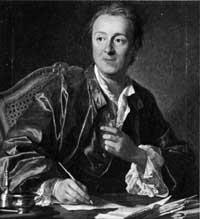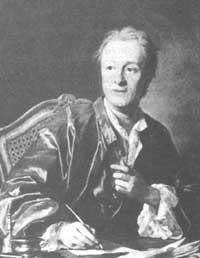Illustration and encyclopedists
1993/04/01 Bandres Unanue, Luis Iturria: Elhuyar aldizkaria
One of the phenomena that has most influenced the development of the history of science is the Enlightenment. At the beginning of the illustration, the collection, dissemination and practical use of scientific research carried out in the last century and philosophical principles was carried out, and the social crisis that generated all this indicates the importance of this movement.
The beginning of the illustration must be seen in the “crisis of European consciousness”. That XVII. It happened at the end of the 20th century. The new vision of the world brought by Newton's works and Bayle's work and Locke's political ideas are the axes of the new type of thinking.
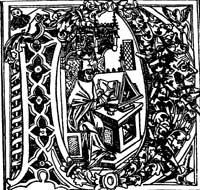
Pierre Bayle (1647-1706) is the author of the book Dictionnaire historique et critique. Numerous publications of this book were produced and can be considered as a source of skeptical current. Voltaire believes he is one of the great thinkers of the century and sharply agitates belief and dogmatism. His works passed from France to Germany. They influenced the current called Aufklärung, the German Enlightenment.
Next to him stand out Fontenelle, Chardin, Boyer and Ockley. All of them shook traditional Western customs, that is, they rigorously criticized the usual mentality, opening the door to a new mentality. In this phenomenon, the works of Montesquieu, Swift and Gray, known in the 1720-30s, had special strength. Charles Louis de Secondat, Baron de Montesquieu (1689-1755) was advisor to the Bordeaux Parliament. After leaving this post, he devoted himself to research with enormous work. By his works, we can consider that he is the father of rational and scientific history (also of sociology as the creator of experimental science).
His book Lettres persanes is the first important document against colonialism. Montesquieu wisely defended intellectual freedom. To this end, the book faces a conservative French macón and a liberal Persian, indicating that European customs had to learn a lot from ancient cultures.
He cared about the society in which he lived. Both he and the revolutionaries who would then come made it clear that the psychology of peoples could be objectively studied and proclaimed that certain norms, physical or psychic customs in force, should be at the service of man. Therefore, he rose up against a misunderstood tradition. Denunciation of certain arbitrariness of power, absurd advantages of apaiztería, etc. once reproached he proposed rational solutions.
Another influencer is Jonathan Swift (1667-1745). This controversial writer and polemicist is full of contradictions. In some way it can be considered despotic, but its work must be analyzed outside of literary value. When in 1722 the king of England gave his lover the power to make coins, Swift strongly criticized the decision to consider it corrupt and arbitrary. Later, in 1733, when the Dublin Parliament enacted a law on clerics' residence, it would write the cruel and harsh political satire The legion club. Meanwhile, he published a deep work titled Gulliver's Travels.
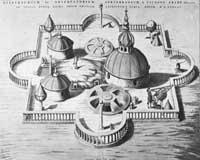
This work, written in key, is often more fruitful than travel literature. This was done initially for scientific purposes, but for reasons of imagination often the writer's fantasy included his part. On the contrary, Gulliver's travels are granted as a contribution to the imagination, but the essentially inexorable satire and cruel criticism of society is real. Swift did not know charity, remoteness and in that work expressed his hatred and contempt for human theory. Swift believed in the continued degradation of human character. In this work by Swift, Gulliver, a doctor of great culture, hates his family and harshly criticizes the customs of Britain. According to him, that of the English is the worst race of small animals that drag on the earth leaving Nature. Therefore, with the excuse of literary work, he had the opportunity to agitate society and make a deep critique.
Finally, we have to bring here John Gray. In his work of imagination, Beggar’s, published in 1728, shows us the way of life of the society of the lower London society and, incidentally, makes a rigorous critique of the life of the children and politicians of their grandparents. It also denounces injustice and arbitrariness.
In short, they all questioned the traditional way of life they knew and, as their works had a great diffusion, these ideas reached many people.
Until that century religious ideas did not touch and remained firm as ever. No one dared to radically question dogmas. Not even to deny the authority of the Church in the field of intellectual freedom. But in those years the God of Christians was going to be picota presenting something irrational and illogical. Year after year the criticisms were increasingly harsh and skepticism in the religious sphere spread.
Humanities
XVIII. The 20th century was a new way of life and philosophy. The man of that century abandoned God and took nature as a pattern and only accepted intelligence to study and understand it. Thus, rebelling against faith invented the concepts of natural religion, natural law or natural state. Therefore, truth was not something given by God, but something that could be achieved through science.
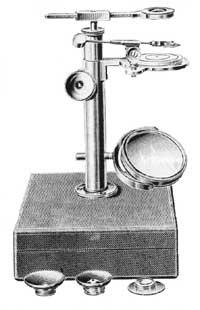
This attitude generated a strong intellectual component. After objectifying the feelings of eternity and infinity, the first rights appeared. And a sensitive attitude towards the peoples. All this acquired irrational, sensitive and pre-romantic characteristics: wild love, free life in the jungles outside of civilization, where the soul can express its true feelings.
In this environment new disciplines appeared: linguistics, philology, anthropology, psychology, etc. This proliferation of knowledge heralded the emergence of human sciences overcoming the common theme. This creation had a great influence on the new scientific approach. The perspectives of scientists changed radically, the new perspectives on reality presented new horizons, in which the XVII. The advantages of the methodology initiated in the middle of the century could be used. The material reality was schematized. The research of nature, including the human being, was the first step, to then see the identity of the results and make unity. In short, philosophical reflection had to leave room for the investigation of the reality presented before the observer.
This environment gave rise to the diversity of cultural realities, to the relativity of space or time and, consequently, to the role of man as chief judge. In this new approach, apart from the ontological simplicity (that is, from philosophical amazement), he is at the center of the problem as capable of solving the relations between things and him.
Knowing that man is also dominated by determined laws and conditions and that phenomena are outside supernatural forces, thought (overcoming speculation) was linked to the path of observation. And although at first the first steps were only very superficial, qualitative change was very important.
Consequently, this new attitude, the Enlightenment, represented an enormous optimism regarding the future of society: the rationality of problems made man capable of overcoming all obstacles, both physical and moral. The way was to illustrate authorities and citizens. But this new trend met with established institutions: Church and monarchy.
Illustration in France
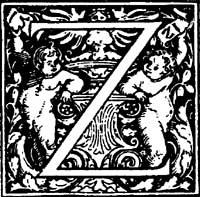
The principle of illustration must be established in France. There, Descartes' works gave rise to a degree of rationality that somehow came into society. Therefore, both the monarchy, religion or institutions were shaken. On the other hand, at the time of Louis XIV, that is, around 1700, France had the beginning of a crisis and in 1709 hunger was enormous. Therefore, the rupture between society and institutions was growing, generating a special atmosphere.
With Louis XV this atmosphere was accentuated. The king died in 1774. During his reign the intellectuals cut ties and relations with the official universities and academies and scientists and philosophers or literates began to meet in various halls of Paris. In these rooms new forms of reason, nature and thought were debated and put in place. On the other hand, the XVIII. Since the beginning of the 20th century the court had an increasingly minor influence on thinkers, since the Jesuits dominated this court. The intellectuals sought other solutions and one of them, although surprisingly, was public opinion. Therefore, in those rooms the steps of reason and light were taken, and through them the foundations of the Revolution were laid.
Along with all this, the number of publications and magazines and brochures had a great boost. The brochures were very important and most suffered censorship. To avoid censorship they went out in the Netherlands and then smuggled into France. In these works it was claimed that all human beings are born equal, that sovereignty is in the people, that reason is insignificant and that no authority has the right to go against the law of nature. As for the History of Science, the work Encyclopédie must be placed in that environment.
The first steps of this work were taken in 1745, when several writers decided to translate the English Cyclopaedia of Chambers into French. Despite not having done this work, on 3 May 1746 it was a stimulus to announce the departure of the Encyclopédie, ou Dictionnaire universel des Arts et des Sciences, traduit des Dictionnaires anglais de Chambers et de Harris, avec des additions. Therefore, the project was not a mere translation. There were many subscribers, more than a thousand. After great incidents, on June 28, 1751 the first number saw the light. This number was very well received by the people, but a work on theology provoked a great conflict and in February 1752, by decree, the first two numbers were outlawed.
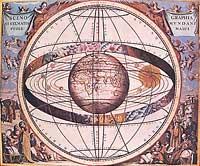
However, the work advanced and above all the conflicts reached until 1759. That year the Parisian Parliament condemned the Encyclopédie. The distribution of the seven edited copies was prohibited and the books were going to burn. That same year Rome also condemned this work. But in vain. From 1762 the publications were made without any impediment and in January 1766 Voltaire announced the last ten issues of the Encyclopédie. Therefore, and ultimately, for the publication of this work, despite being one of the great milestones of the history of civilization, huge swings occurred.
It is really difficult to make a logical classification of all the discoveries that Encyclopédie wanted to address. This barrier also found encyclopedists. In the first part of his Discours préliminaire, D’Alembert tells us the twofold objective of the work: to provide an orderly development of knowledge as an encyclopaedia and to clarify the general principles on which sciences and arts are the dictionary (Dictionnaire). Before D’Alembert begins to express this knowledge, he tells us that it is easy to realize that science and arts support each other and that there is a chain between them. But, having said this, it will show us the difficulties of the project.
The first theme of the encyclopedia scheme is mathematics. He wrote many articles on geometry, arithmetic and combinatorics. In the field of physics, both the bases of dynamics and mechanics occupy a special place and have special importance the work on the weight and movement requested from Fromey, as well as the friction of Necker. Astronomy, optics, electricity… all topics will take place.
Following the order of the scheme, below is the natural history, which highlights metallurgy, mineralogy and chemistry. The medicine was not on the sidelines either.
A common aspect of great importance for all works is that of explaining in almost all articles the historical development of knowledge corresponding to each of them, following with that historical synthesis. But these synthesis were not just scholarly works. On the contrary, they are always made from a critical perspective.
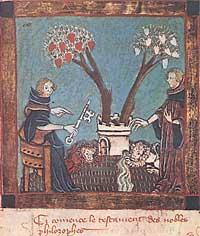
The Encyclopédie, composed of seventeen texts and eleven images, was a teamwork to respond to the historical moment. At that time traditional knowledge was questioned and the need for a critical synthesis was perceived. In its elaboration great problems appeared foreign to him. But these problems were somehow shocking to give continuity to work and fight dogmatism.
In the authors we must mention Diderot, who finally took over the direction. He defended scientific truths above all opinions. Although notable gaps are detected from the present point of view, the greatest importance of this work is its qualitative character, that is, its openness to all areas of knowledge without any prejudice. As a result, the Encyclopedia meant changing the spirit of a state (France), that is, the rupture with the ancient world. He offered new scientific, technical, economic and political possibilities. In this way, he joined the revolutionary victories of the encyclopedists and history says that the revolution was considered a political consequence of his ideology.

Gai honi buruzko eduki gehiago
Elhuyarrek garatutako teknologia




